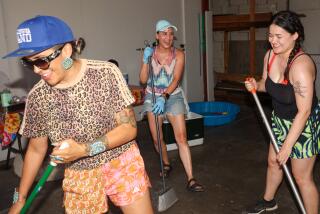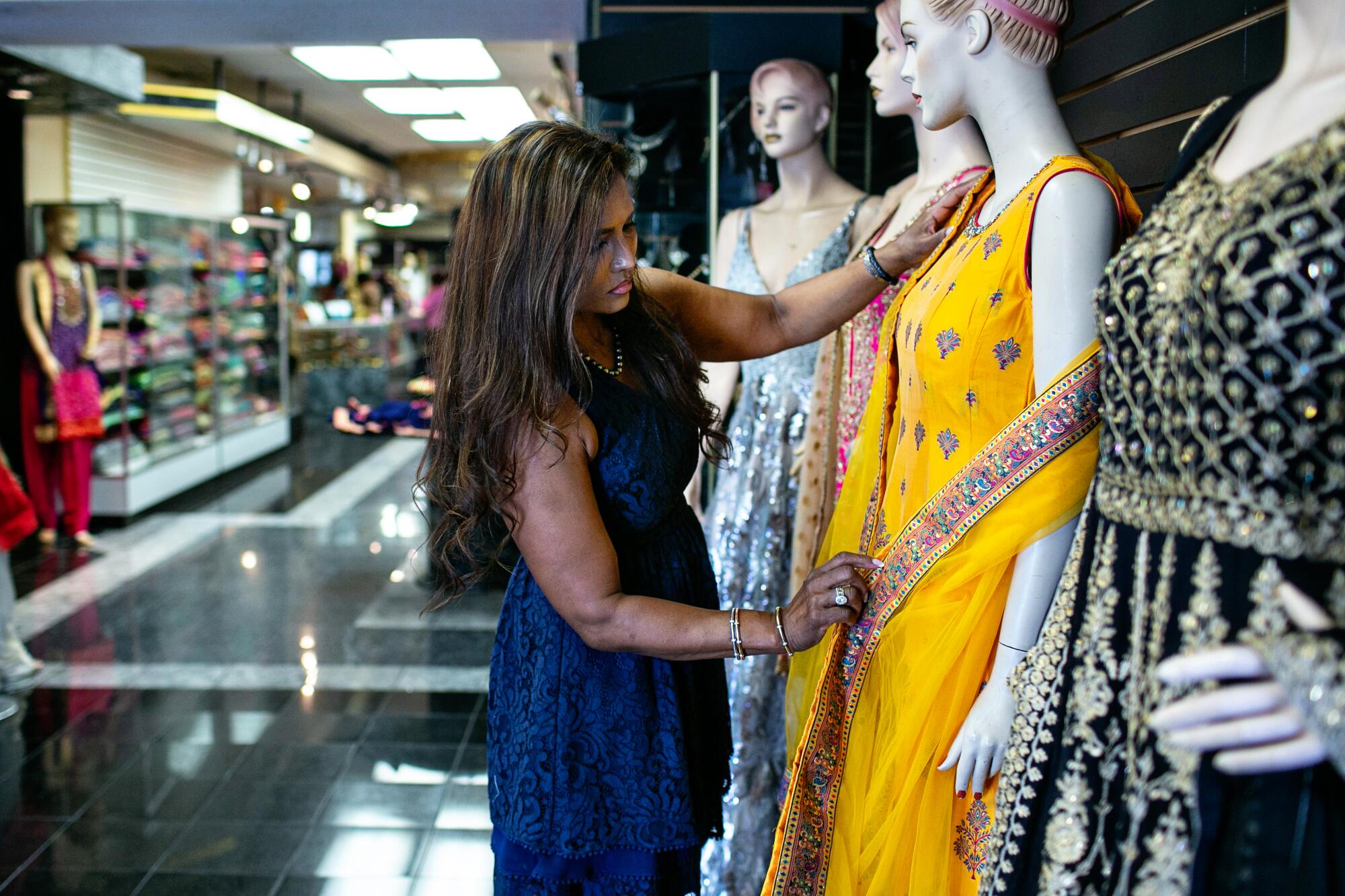
Seema Choudhary needed eight traditional Indian outfits for her daughterâs dance troupe.
A few years ago, she might have driven the roughly 25 miles to Little India from her home in Irvine.
This time, she ordered from a supplier more than 8,500 miles away in Gujarat, which offered lower prices and shipped the skirts, scarves and embroidered tops to her door.
Like many Indian Americans in Southern California, Choudhary has cut back on visiting Little India in Artesia, in favor of online shopping and Indian grocery stores closer to home.
She still goes once a month for items like sandalwood incense and mango wood candle holders that she canât get in Orange County.
But she and many in her 1,500-member OC Indian Womenâs group view Little India as a slightly fusty commercial strip that has failed to evolve with their changing needs.
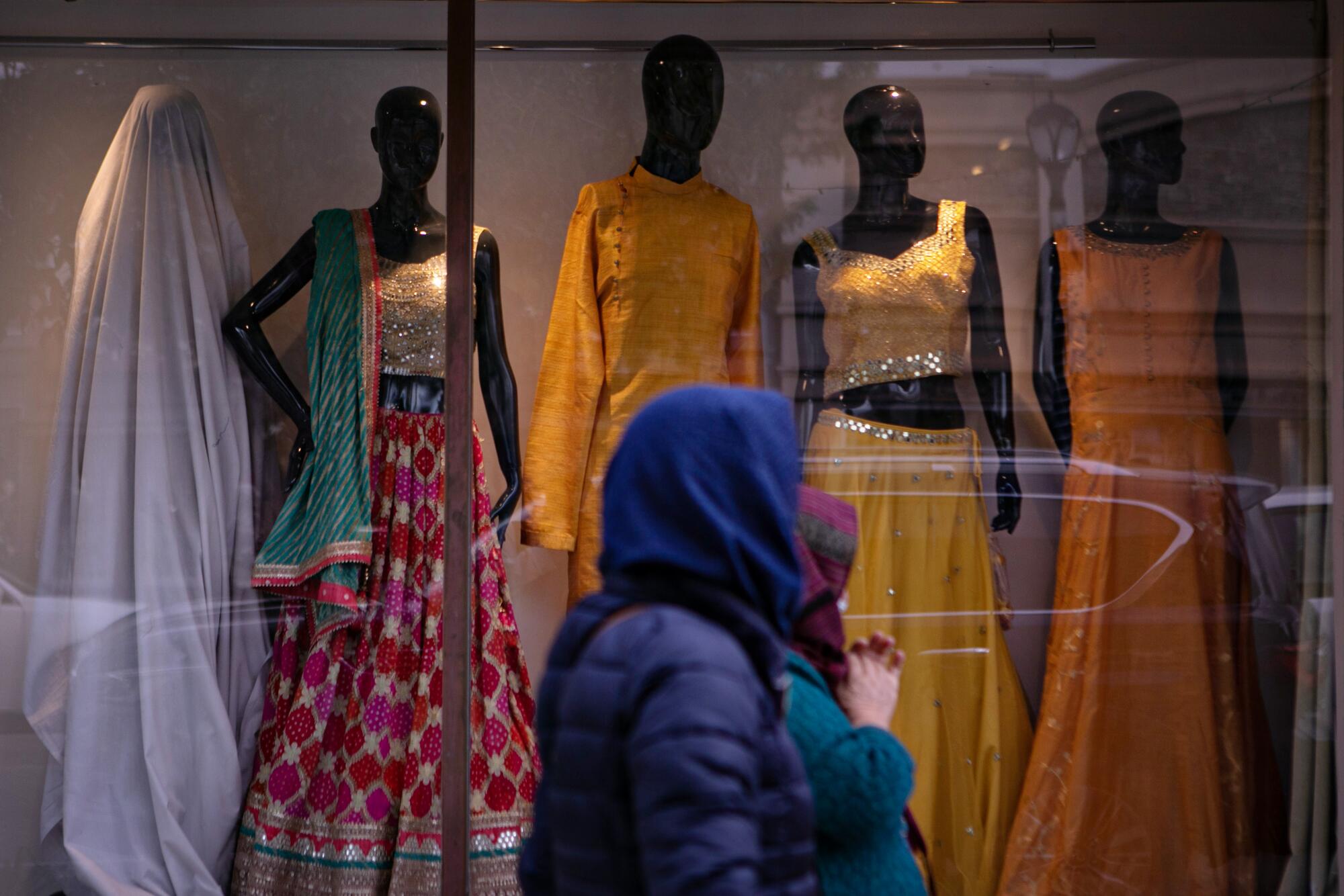
âThey have to make it more festive and more welcoming,â said Choudhary, a Montessori preschool chief executive who emigrated from New Delhi in 1997.
Merchants on Pioneer Boulevard in Artesia, which has been a place to buy a sari, snack on crispy, puffy puris and sit down to a vegetarian thali feast since the 1980s, were struggling even before the COVID-19 pandemic.
Some have adapted, modernizing their offerings and tapping the internet to build a following.
Others have watched their wares gather dust or their tables stay empty as customers like Choudhary shop elsewhere. The Little India Center, a two-story complex that housed henna artists, threaders, photographers and bridal studios, is an empty hulk.
The question facing Little India goes beyond how to reinvent itself. The undercurrent in many conversations is: Does it have a reason for existing?
Mala Malani opened Sona Chaandi in 1980, when the Indian presence on Pioneer Boulevard was little more than an appliance store and a grocer.
Her 11,000-square-foot emporium offers everything from richly colored silk saris to leggings, jewelry and eyebrow threading.
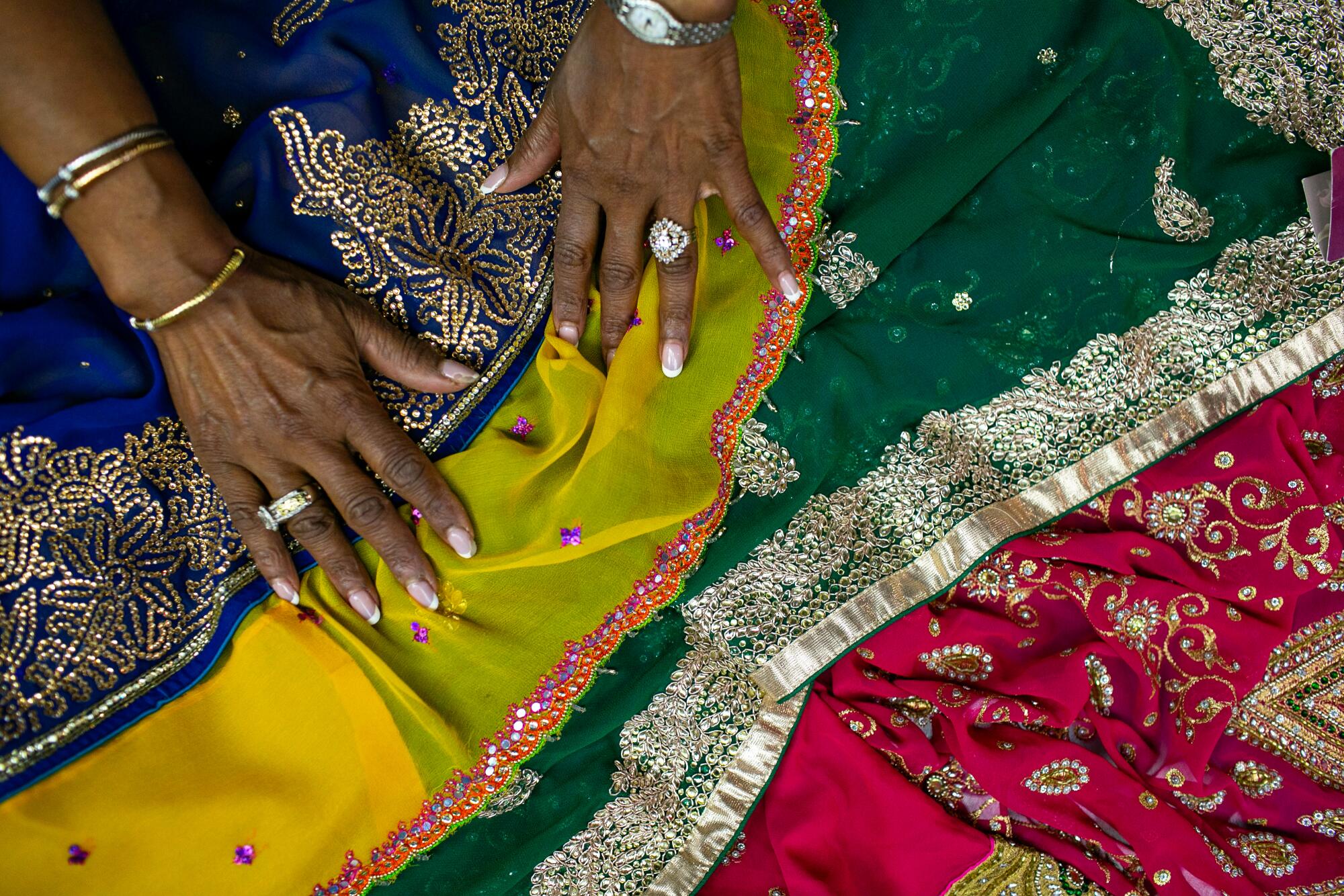
Once, customers came from Bakersfield and the far reaches of Orange and Ventura counties. Even if there was an Indian restaurant or supermarket near their homes, the quality and breadth could not match what they found crammed into a few blocks in Artesia.
Hollywood picked up on Little India too. Madonna has browsed the racks at Sona Chaandi. The storeâs clothing and accessories have been featured in Disneyâs âJessie,â Foxâs â9-1-1â and most recently Netflixâs âNever Have I Ever.â
On a recent Saturday morning, Malani folded dresses and shook out menâs coats called sherwanis, then moved on to polish gold bracelets and bejeweled turbans.
With only a trickle of customers, she netted less than $50 in sales that morning.
Before the pandemic, revenue was dipping slightly. In 2020, as COVID-19 raged, it plunged by 75%. Malani was sitting on $1 million of inventory and considered selling the store.
As people got vaccinated and ventured out again, receipts rebounded to about 60% of pre-pandemic levels. But that is not enough to sustain the business she has owned for more than 40 years and that paid for masterâs degrees for her two children.
Now, the Omicron variant is threatening to keep customers home again.
âI never worried about another clothing shop in Artesia, because I always felt this was the best,â said Malani, who is in her late 50s and grew up in Fiji as the daughter of Indian immigrants. âWhat I didnât expect was customers to say they were buying clothes from Amazon and from local shops.â
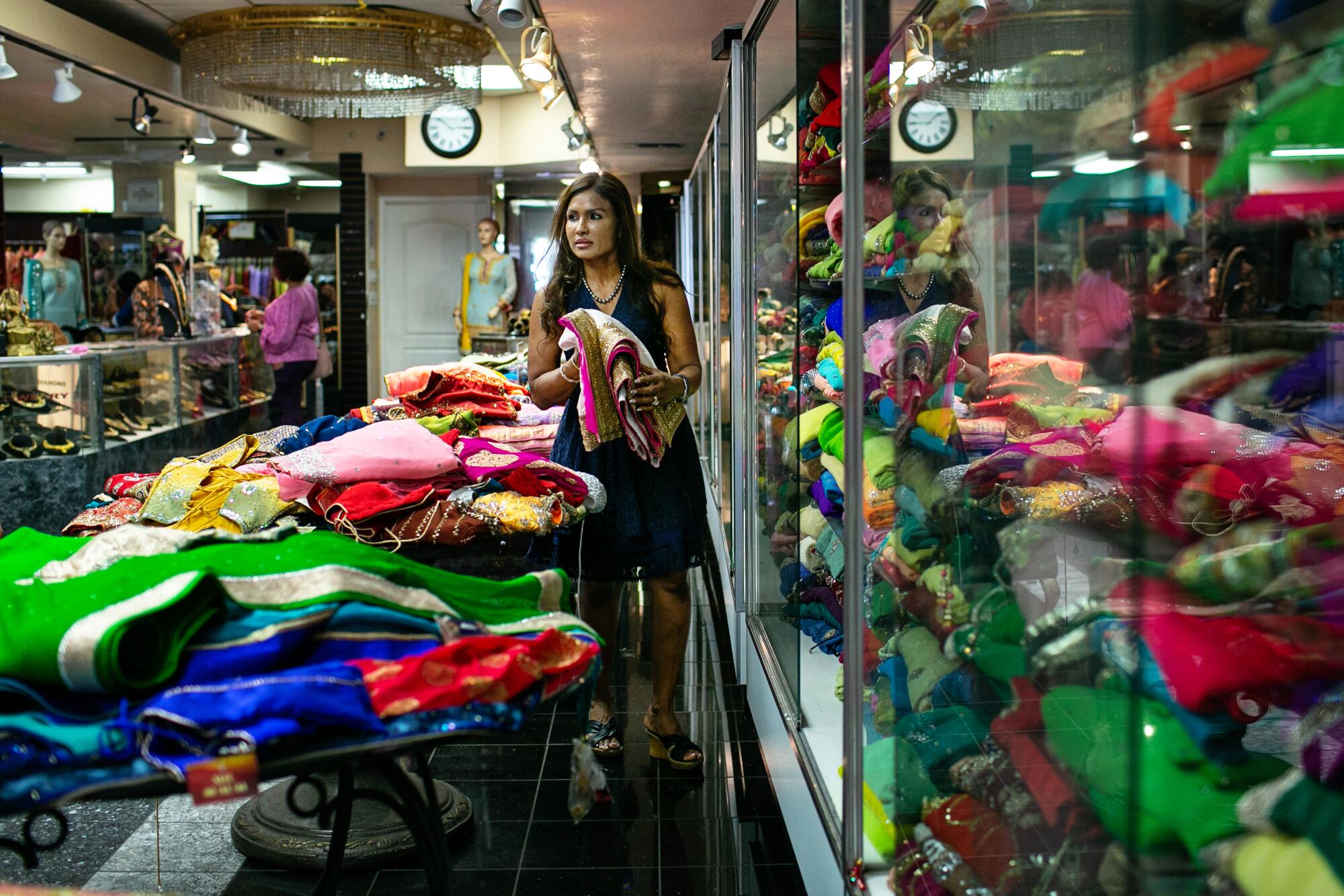
Faiz Baig, president of the Artesia Chamber of Commerce, owns an insurance agency on Pioneer Boulevard. He estimates that 10 shops on the strip â including Guru Crafted Indian food, East Avenue womenâs clothing and Sital clothing â have closed since the pandemic began. Foot traffic is down by about half, he said.
On a recent Saturday, Baig sipped masala chai with a restaurant owner who was barely âhanging on.â He spoke about loans with an appliance store worker who needed âmore helpâ and expressed sympathy for a clothing retailer who was âhoping business would improve.â
To avoid more closures, the city should give grants or low-interest loans to business owners and put a moratorium on evictions, Baig said.
But he said the onus is also on Little India merchants to âkeep up with trends.â
âCustomers want items they see on Instagram or television, and some stores and restaurants canât provide it like the internet can,â Baig said.
Little Indiaâs origins date to 1971, when Balkishan Lahoti began selling spices and Indian staples out of an Artesia garage. Other Indian merchants set up shop on Pioneer Boulevard to cater to the growing Indian population in Cerritos, which borders Artesia on three sides.
By 1986, there were about two dozen Indian businesses on Pioneer. A decade later, the number was about 90.
Over the decades, Little India has had a troubled relationship with the Artesia city government, which has blocked efforts to install âLittle Indiaâ signs and has wrangled with merchants over traffic and parking.
Today, Cerritos and Artesia combined have about 5,300 residents of Indian descent, according to the U.S. census.
Los Angeles County has about 109,000 Indian American residents, including sizable clusters in Torrance, Santa Clarita and other suburbs. About 55,000 Indians call Orange County home, including 13,000 in Irvine.
These communities have grown large enough to support their own stores, making a trip to Little India unnecessary for all but the most specialized items, such as holiday decor.
On the last weekend of October, as Diwali approached, Pioneer Boulevard was unusually crowded. To celebrate the Festival of Light, garlands of blue, pink, orange and yellow colors hung above stores and walkways.
The sidewalk was so jammed that some shoppers spilled into the streets as others purchased diyas, or clay lamps, as well as candles and string lights for the holiday.
Inside Paratha Grill, customers lined up for the restaurantâs namesake flatbread stuffed with potatoes, cabbage, spinach, radish, chilis or cheese and topped with mango or mint chutney.
Owner Gurpal Singh knew the surge was temporary.
âThis weekend, everyone is in Little India,â he said. âIt will be empty in two weeks.â
Artesiaâs population is split almost evenly among Asian (including Indian), Latino and white residents.
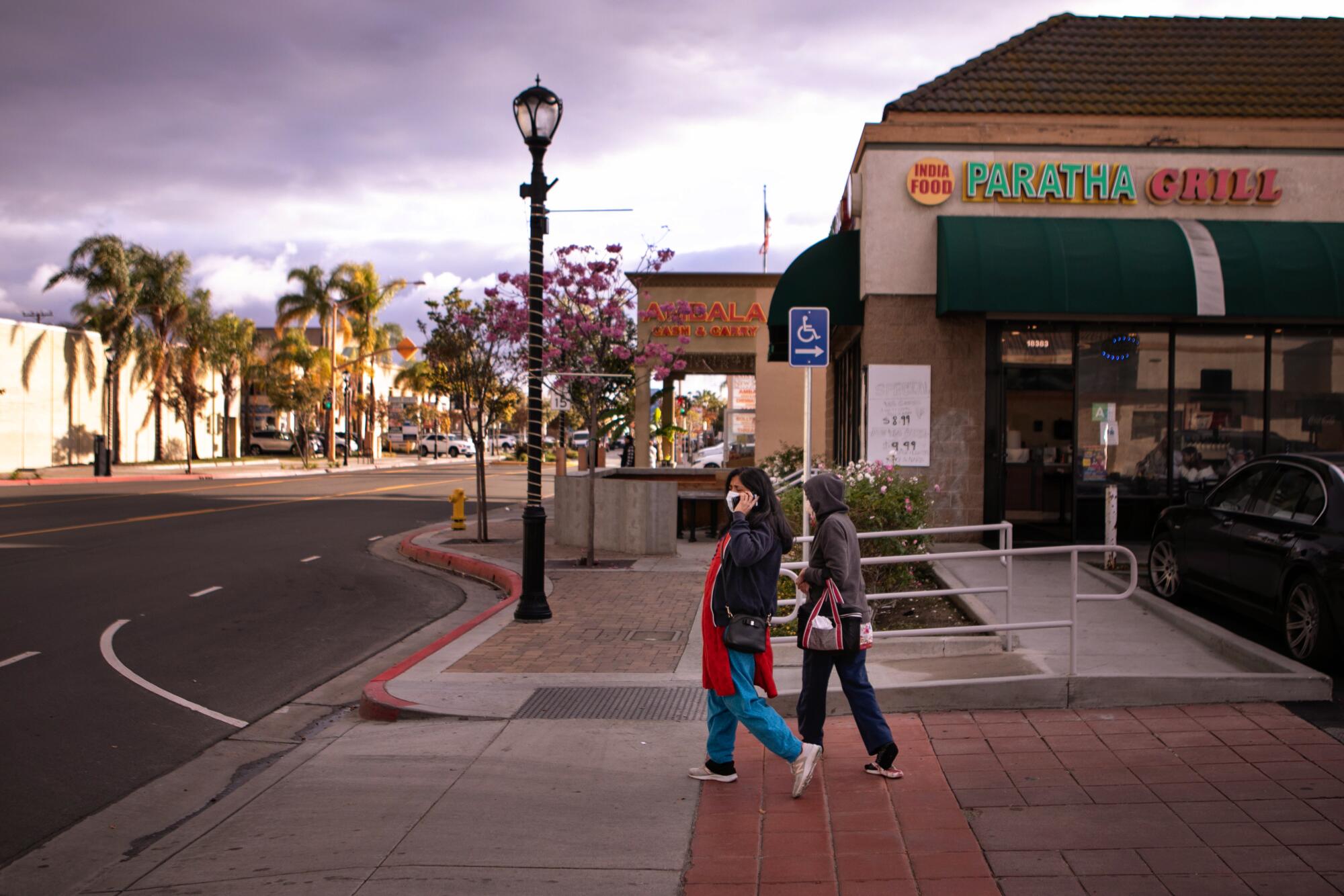
Paratha Grill, which also serves Punjabi specialties like chhole-kulche â flatbread with chickpea stew â and Indo-Chinese fusion dishes, shares a strip mall with a Chinese seafood restaurant and a boba tea shop, as well as an Indian clothing store and a tailor specializing in saris.
Singh owns franchise restaurants â four Brooklynz Pizzas and three Flame Broilers â around Southern California that have done well in the pandemic.
Paratha, the restaurant closest to his heart, with recipes from his hometown of New Delhi, has been losing money the last few years. Singh is thinking about closing it.
Singh, who lives nearby in Cerritos, was a biochemistry professor at Delhi University, fleeing India shortly after riots in 1984 targeted Sikhs like him.
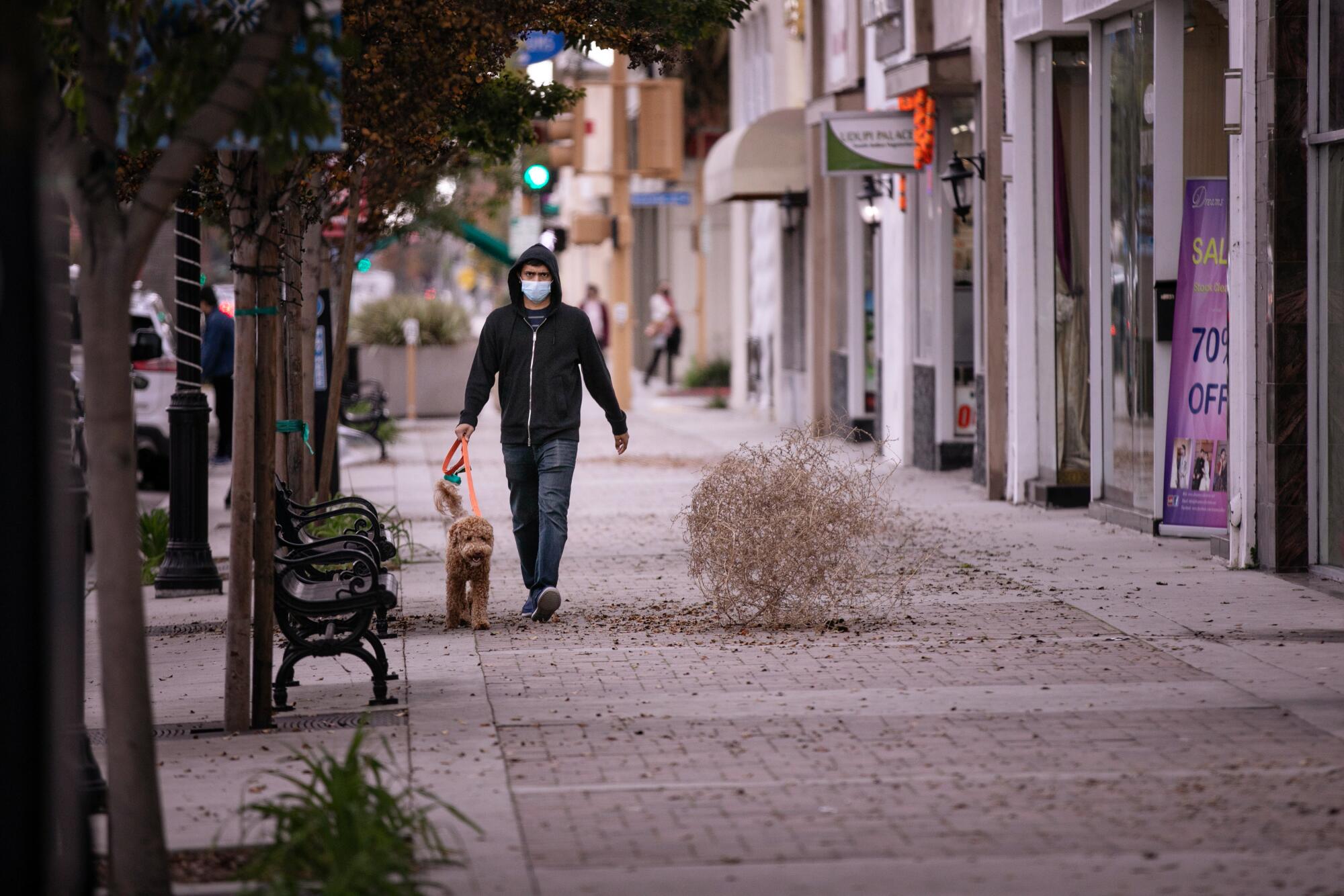
He blames Little Indiaâs struggles in part on traffic backups on Pioneer Boulevard and a lack of parking, as well as the cityâs refusal to allow âLittle Indiaâ signs on the 91 Freeway.
City leaders have said they want to embrace all ethnicities and not just highlight Little India.
Indian Americans are emerging from a pandemic that hit them not only here but in India, which suffered a devastating wave of illnesses and deaths in early 2021.
As they resume old shopping habits and develop new ones, Little India merchants must give them a reason to come to Artesia, Singh said.
âAs Indians are returning to markets and restaurants, we must let them know we exist,â he said. âThere are great Indian places in San Diego, Riverside and Diamond Bar weâre competing against. We have to promote ourselves.â
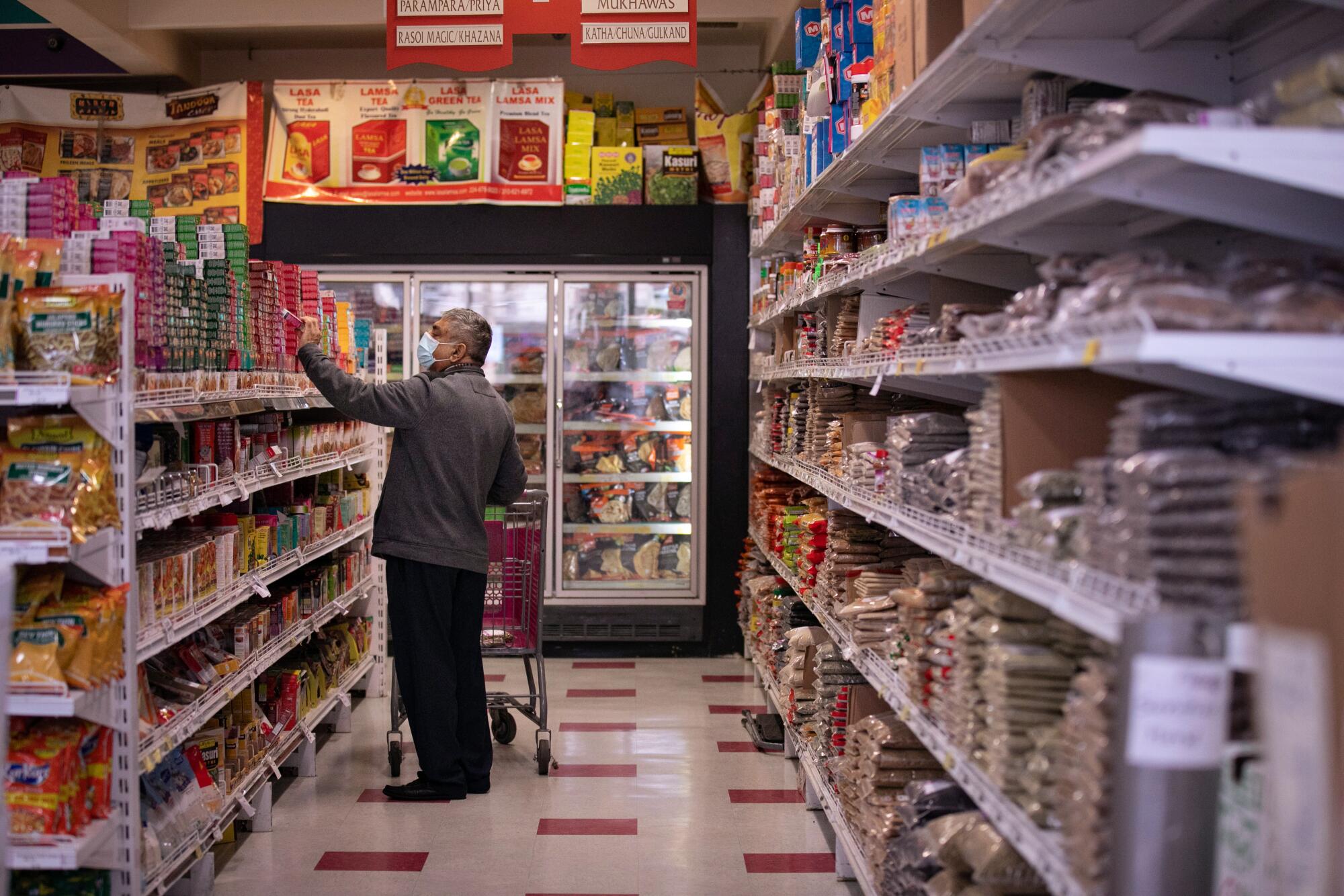
Premji Keray opened Pioneer Cash & Carry, one of the first grocery stores in Little India, in 1982. In 2015, his son, Dave Keray, opened a second store three blocks away.
Unlike the original location, the new Pioneer Cash & Carry has ample parking and eight checkout lanes. A third of the store is dedicated to produce, and two aisles are set aside for rice. The younger Keray, 49, calls it âthe Trader Joeâs of Little India.â
During the pandemic, revenue increased by as much as 40% as Indian Americans stopped eating out and cooked at home. Inspired by YouTube tutorials on how to make Indian dishes, they flocked to the store to buy ingredients.
Growing up at his fatherâs store and now as a business owner himself, Keray has watched the boulevard mostly stand still in time. And he is not optimistic about its future.
Of all the peaks and slumps he has seen, âthis is more than a slump,â he said.
âThereâs little outreach to second-generation Indian customers or non-Indians,â he said. âMany owners donât want to step out of their comfort zone.â
But innovation is not always enough to succeed on Pioneer Boulevard.
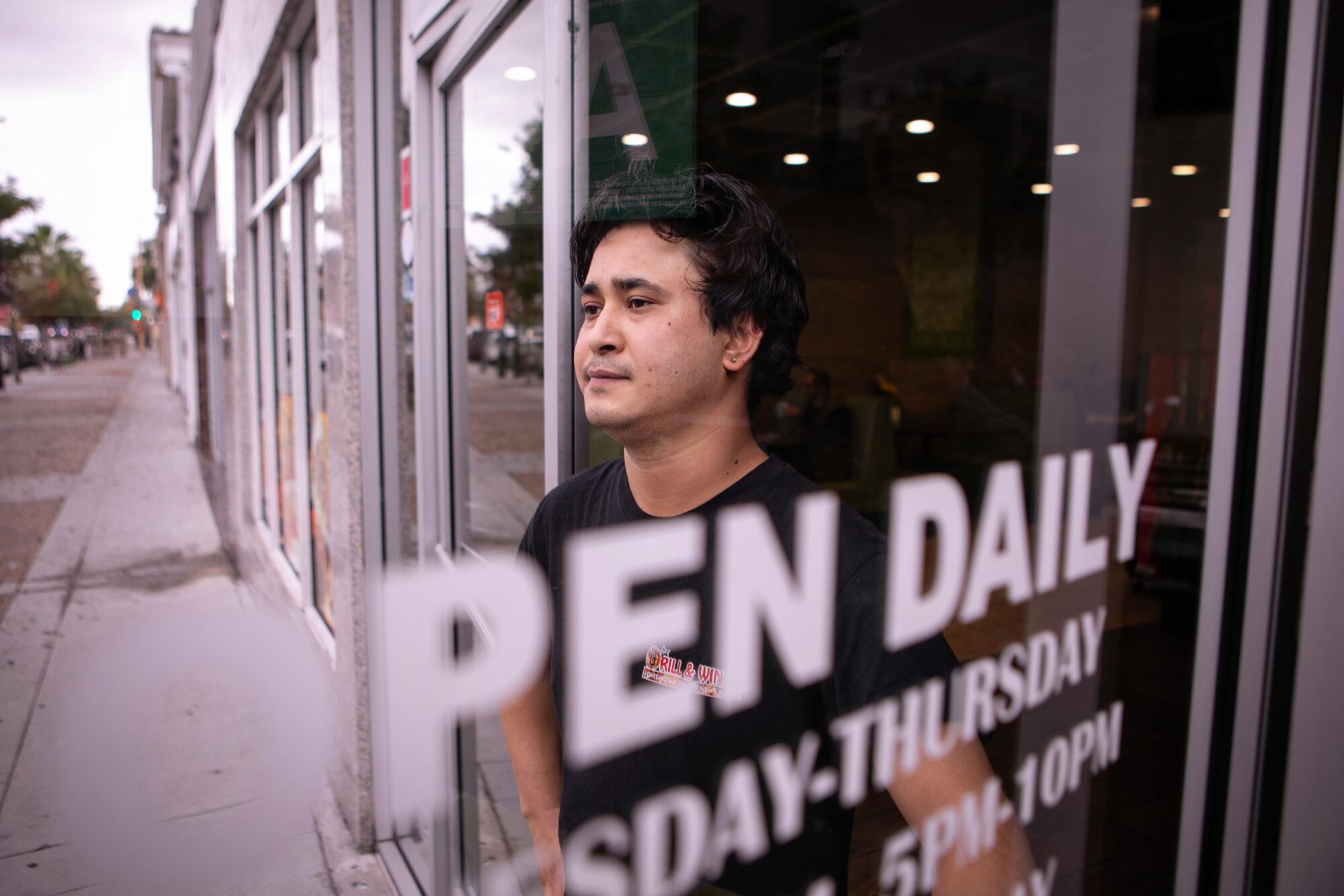
Gautam Vishwakarma opened Indo-American restaurant G Star Grill and Wings in February, hoping to offer an alternative to the Punjabi cuisine that dominates the strip.
âIndia is a multilinguistic and cultural country that should be represented better,â said Vishwakarma, 32, a native of Meghalaya in eastern India and a former chef at a luxury resort near the Taj Mahal Palace in Agra.
Among the restaurantâs offerings are American-style buffalo wings, Indian-Mexican fusion tikka masala burritos, Indo-Chinese Sichuan chicken tikka, Tibetan-style dumplings called momos, Hyderabadi biryani and a Bengali fish curry called macher kalia.
It has some fans, but business has been slow. In two hours on a recent Saturday, no one entered the brightly colored restaurant with mint-green booths.
Vishwakarma has had difficulty making payroll for his four employees. He wonders if his business is suffering because of proximity to restaurants that have remained largely frozen in time.
âAll the restaurants here havenât changed their menus in 30 or 35 years, and that isnât going to attract newer customers,â Vishwakarma said.
To survive, Little India must also retain longtime customers like Sarnath Chattaraj.
When Chattaraj, a Kolkata native, came to Southern California in 2000, Little India was the only place he could find decent-tasting chicken biryani or fish curry. He regularly made the 60-mile drive from Simi Valley.
Now, there are good Indian restaurants near his home, Chattaraj said.
âThis is positive because that means the Indian community is growing, and now there are big groups and services all over,â said Chattaraj, a research scientist. âThat can be a problem for Little India, though.â
More to Read
Sign up for Essential California
The most important California stories and recommendations in your inbox every morning.
You may occasionally receive promotional content from the Los Angeles Times.

